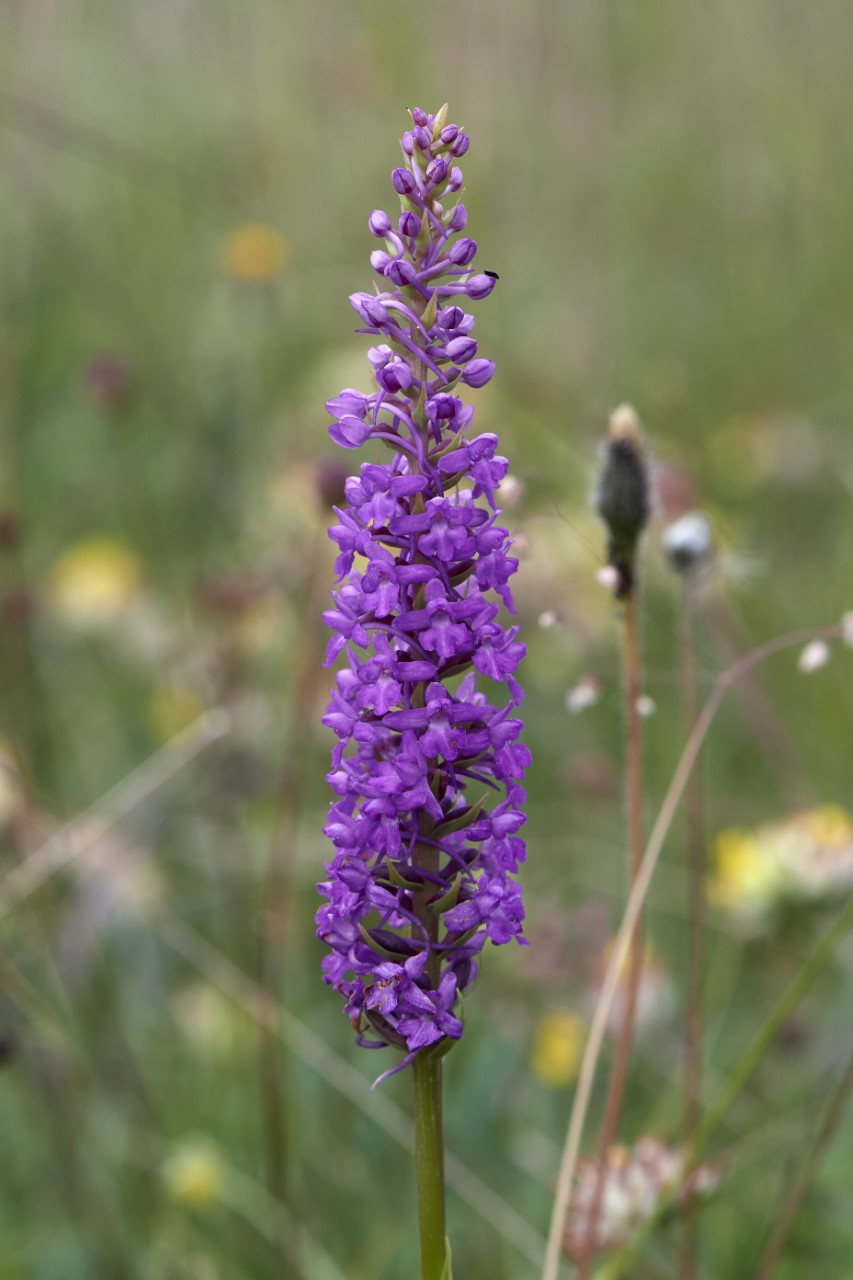Eleven former, and eager, NHSN botany course students joined their tutor Janet Simkin on a walk at Thrislington Quarry on a bright summer’s day.
The walk consisted of two parts: the Thrislington NNR translocated magnesian limestone grassland, and the quarry grassland. Janet reminded us of its history. In the 1980s Tarmac, CRH plc which owned Thrislington Quarry wanted to extend the quarry. Natural England led a successful campaign to have the turf translocated before the quarry extension could go ahead. The translocation took place between 1982 and 1990. Since then the mix of grasses has changed but the initiative is still considered a national success.
We listed 59 species in the NNR and 46 species in the quarry grassland. However, although it was a useful exercise to identify the species currently growing there, for many of us Janet’s expertise and educational flare made the day all that better. We considered the wider picture and the ecology of the changes in the quarry, but also looked at what details of plants could help us identify the species with some certainty.
As in so many areas across the North East this year the orchids put on a magnificent display, both in the translocated grassland and the quarry grassland. These included Common Spotted Orchid, Dactylorhiza fuchsia; Fragrant Orchid, Gymnademia conopsea; Common Twayblade, Neotthia ovata; Lesser Butterfly-orchid, Platanthera bifolia; Dark-red Helleborine, Epipactis atrorubens.

Fragrant Orchid (Gymnademia conopsea) 
Dark-red Helleborine (Epipactis atrorubens)
In addition to the plants, we were struck by the numbers of butterflies in the NNR, a sight which is becoming increasingly rare. These included Common Blue, Meadow Brown, Ringlet and Little Skipper. But the prize went to a Drinker Moth, which didn’t seem to want to leave us.

We had lunch on a wooden platform with an information board about the site, in the shade overlooking a damp hollow surrounded by blackberry bushes, wild raspberries and delicious wild strawberries.